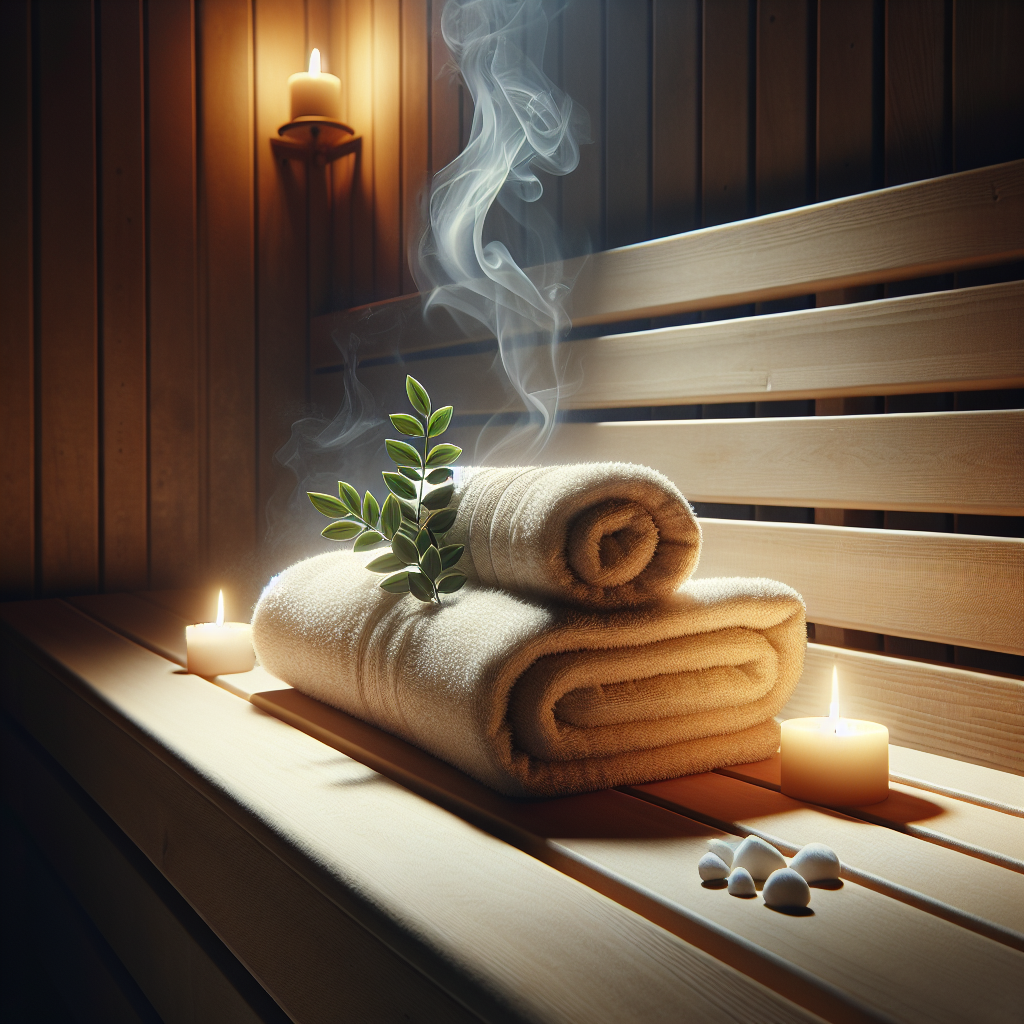Are you ready to discover the secrets of the perfect traditional sauna experience? Whether you’re a seasoned sauna enthusiast or a first-time adventurer, understanding the best way to take a traditional sauna is key to maximizing its therapeutic benefits. In this article, we will explore expert tips and techniques that will help you fully immerse yourself in the soothing heat, unlock your body’s potential, and emerge revitalized and refreshed. Get ready to step into the world of traditional saunas and embark on a journey of relaxation like no other.
Preparing for the Sauna
Start by hydrating
Before entering a sauna, it is essential to hydrate your body. Saunas cause sweating, which can lead to dehydration if you are not properly hydrated beforehand. Drink a glass of water or a sports drink to replenish your body’s fluids. Avoid consuming caffeine or alcohol, as they can dehydrate you further.
Choose the right time
Timing is crucial when it comes to enjoying a traditional sauna. It is best to visit the sauna when you have enough time to relax and unwind. Avoid rushing in and out, as it can diminish the experience. Find a time when you can fully immerse yourself in the sauna without any interruptions.
Take a shower
Before entering the sauna, it’s important to take a refreshing shower. This will help remove any dirt, oil, or impurities from your body, ensuring a clean and hygienic sauna experience. Remember to use a mild soap or body wash to avoid any harsh chemicals that can irritate your skin or interfere with the sauna’s therapeutic benefits.
Adjust the temperature
One of the key aspects of a successful sauna session is setting the right temperature. Most traditional saunas have a control panel where you can adjust the heat. Start with a lower temperature, around 70-80 degrees Celsius, to allow your body to gradually acclimate to the heat. If you feel comfortable, you can increase the temperature slightly. Remember, it is essential to listen to your body and not push yourself beyond your limits.
Entering the Sauna
Choose a comfortable spot
When entering the sauna, look for a spot that you find comfortable. Some saunas may have different levels of seating, such as upper benches or lower benches. Choose a location that suits your preference and allows you to relax. If it’s your first time, consider opting for a lower bench closer to the entrance, where temperatures are usually slightly cooler.
Sit or lie down
Once you have found a comfortable spot, decide whether you prefer to sit or lie down. Both positions have their benefits, so choose what feels most relaxing for you. Sitting upright can promote better circulation and keep your airways more open. On the other hand, lying down can provide a sense of relaxation and release tension from your body. Listen to your body and adjust your position accordingly.
Cover up with a towel
To maintain proper sauna etiquette, it’s customary to bring a clean towel and place it on the bench or seat before sitting or lying down. This helps to create a barrier between your body and the sauna’s surface, ensuring cleanliness and preventing perspiration from directly contacting the wood. The towel can also be used to wipe off sweat and keep yourself dry during the session.
Sauna Etiquette
Respect personal space
When in a sauna, it’s important to respect the personal space of others. Leave enough room between you and others to promote a comfortable and relaxing environment. Avoid invading their space or having loud conversations that may disturb their experience. Remember, a sauna is a place for both physical and mental relaxation, so maintaining a considerate distance is essential.
Maintain a quiet atmosphere
Another crucial aspect of sauna etiquette is maintaining a quiet atmosphere. Saunas are meant to provide a serene and tranquil environment, allowing you to rejuvenate both your body and mind. Avoid talking loudly or engaging in disruptive activities to ensure a peaceful atmosphere for everyone. If you wish to have a conversation, keep it low and conversational.
Keep the sauna clean
As a responsible sauna-goer, it’s important to keep the sauna clean throughout your session. Use the towel you brought to wipe off any sweat from the bench or seat before you leave. Avoid leaving any trash or personal belongings behind. Remember, cleanliness is not only a basic courtesy but also contributes to a more enjoyable sauna experience for everyone.
Sauna Duration
Start with short sessions
For beginners or those who are new to saunas, it is recommended to start with shorter sessions. Aim for around 10-15 minutes and gradually increase the time as your body becomes accustomed to the heat. Starting with shorter sessions allows your body to adapt and helps prevent any discomfort or overheating.
Gradually increase the time
Once you are comfortable with shorter sessions, you can gradually increase the time spent in the sauna. Experienced sauna-goers often enjoy sessions of 20-30 minutes or even longer. However, it’s important to note that the duration can vary from person to person. Pay attention to your body’s signals and adjust the length of your sessions accordingly.
Listen to your body
The most important rule when it comes to sauna duration is to listen to your body. Each person’s tolerance for heat and humidity is different, and it’s essential to recognize your own limits. If you start feeling lightheaded, dizzy, or experience any discomfort, it’s time to end the session. Remember, your well-being is the top priority, so always prioritize your comfort and safety.
Sauna Care
Take breaks between sessions
To maximize the benefits of the sauna and allow your body to recover, it’s vital to take breaks between sessions. After each session, step outside the sauna and give yourself a few minutes to cool down and relax. This allows your body temperature to regulate and prevents overexposure to heat.
Stay hydrated
During and after the sauna, it is crucial to stay hydrated. As saunas promote sweating, your body loses fluids, and it’s essential to replenish them. Remember to drink water or other hydrating beverages to maintain your body’s balance. Avoid sugary or caffeinated drinks, as they may dehydrate you further.
Cool down gradually
After your sauna session, it’s important to cool down gradually. Avoid jumping into a cold shower or plunging into ice-cold water immediately. Instead, allow your body to return to its normal temperature naturally. Sit in a relaxing area, sip on a cool beverage, and let your body gradually adjust to the cooler environment. This gradual cool-down will help your body recover and prevent sudden shifts in blood pressure.
Post-Sauna Rituals
Take a cool shower
After your sauna session, a refreshing cool shower can help lower your body temperature and rinse away any sweat or impurities. Use lukewarm or cool water to gently wash your body, and if you prefer, you can use mild soap or body wash to cleanse your skin. This will leave you feeling refreshed and rejuvenated.
Rest and relax
Following a sauna session, it’s important to take some time to rest and relax. Find a quiet and comfortable area where you can unwind and let your body recover. Lie down on a comfortable surface, close your eyes, and take deep breaths. This restful period allows your body to recharge and integrate the benefits of the sauna session.
Rehydrate and replenish
Hydration is key after a sauna session. Drink plenty of water or other hydrating beverages to replenish the fluids lost during sweating. Additionally, consider nourishing your body with light, healthy snacks or a fruit smoothie to replenish essential nutrients. Taking care of your body’s needs after a sauna session ensures a smoother recovery process and helps you fully enjoy the benefits of this ancient practice.
Sauna Health Benefits
Promotes relaxation
Taking a traditional sauna can be a wonderful way to unwind and relax after a long day. The warmth and quiet atmosphere of the sauna help to soothe both your body and mind, allowing you to let go of stress and tension. The sauna’s therapeutic benefits promote relaxation, alleviating muscle soreness, and promoting a sense of overall well-being.
Improves blood circulation
The heat in a traditional sauna causes your blood vessels to dilate, increasing blood flow throughout your body. This improved circulation helps deliver oxygen and essential nutrients to your muscles, tissues, and organs more efficiently. Enhanced blood circulation also aids in the removal of waste products from your body, promoting overall health and vitality.
Detoxifies the body
Saunas are known for their detoxifying benefits. Sweating helps eliminate toxins and impurities from your body through your skin pores. It’s like giving your body a natural cleanse. Regular sauna sessions can assist in reducing the toxic load on your body and contribute to a healthier and cleaner system.
Sauna Safety Tips
Avoid alcohol and drugs
It is essential to avoid consuming alcohol or using drugs before or during a sauna session. Alcohol and drugs can impair your judgment, dehydrate your body, and interfere with your body’s natural cooling mechanisms, increasing the risk of overheating or other health complications. Keeping a sober mind and body ensures a safe and enjoyable sauna experience.
Consult a doctor if unsure
If you have any underlying health conditions, such as heart disease, high blood pressure, or any other concerns, it is advisable to consult your doctor before using a sauna. They can provide guidance specific to your health situation and ensure that using a sauna will not pose any risks or exacerbate existing conditions. Your doctor’s advice is valuable in ensuring a safe sauna experience tailored to your needs.
Do not overheat
While saunas have numerous health benefits, it’s crucial not to overheat your body. If you start feeling lightheaded, dizzy, or experience any discomfort, leave the sauna immediately and cool down. Overexposure to excessive heat can be dangerous and may lead to heat exhaustion or heatstroke. Remember to listen to your body, take breaks, and prioritize your well-being above all else.
Sauna Variations
Dry sauna
A dry sauna is the most common type of traditional sauna. It uses heated stones or electric heaters to raise the temperature inside the sauna room. The humidity level is usually low, resulting in a dry heat that promotes sweating and relaxation. Dry saunas are widely available and offer a classic sauna experience.
Steam sauna
A steam sauna, also known as a wet sauna, utilizes high humidity and steam to create its unique experience. These saunas generate steam using a steam generator, creating a moist heat environment. Steam saunas can help open up your pores, clear your sinuses, and offer a more intense sweating experience. This variation is preferred by those who enjoy a higher humidity level.
Infrared sauna
Infrared saunas use infrared heaters to emit radiant heat, which is absorbed directly by your body. Unlike traditional saunas, infrared saunas heat your body rather than the surrounding air, making it a milder and more tolerable experience for some individuals. Infrared saunas are often preferred by those who find the intense heat of traditional saunas uncomfortable but still wish to enjoy the therapeutic benefits.
Conclusion
Taking a traditional sauna is a wonderful way to relax, rejuvenate, and experience numerous health benefits. By following the proper preparation, sauna etiquette, and safety tips, you can fully enjoy this ancient practice. Remember to hydrate, choose the right time, and adjust the temperature to your comfort level. Respect personal space, maintain a quiet atmosphere, and keep the sauna clean. Start with shorter sessions, gradually increase the time, and always listen to your body’s signals. Take breaks, stay hydrated, and cool down gradually. Afterward, practice post-sauna rituals, such as taking a cool shower, resting, and replenishing your body. Traditional saunas promote relaxation, improve blood circulation, and detoxify the body. Be mindful of sauna safety, avoiding alcohol and drugs, and consulting a doctor if needed. Explore different sauna variations, including dry saunas, steam saunas, and infrared saunas. Embrace the sauna experience and enjoy the many benefits it has to offer.

